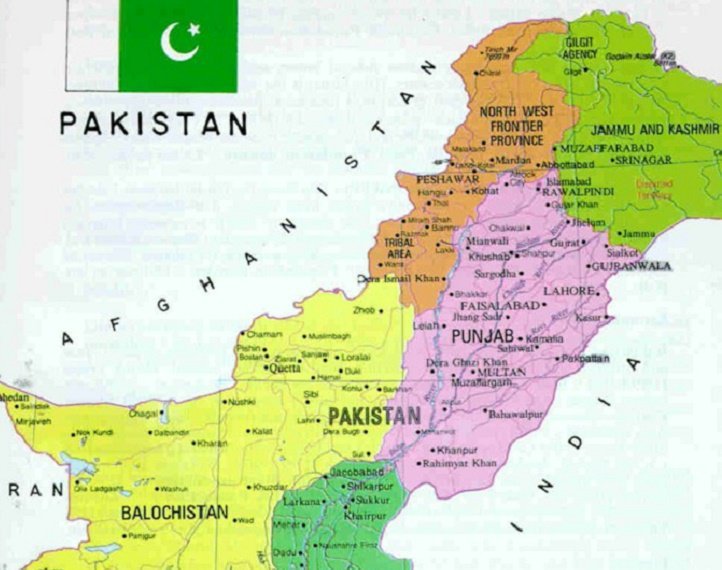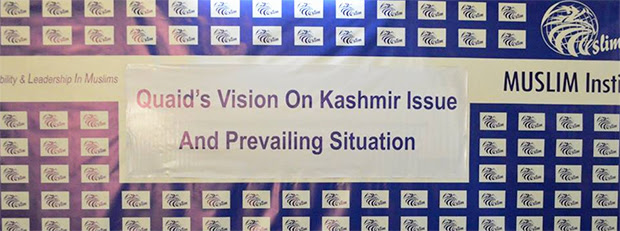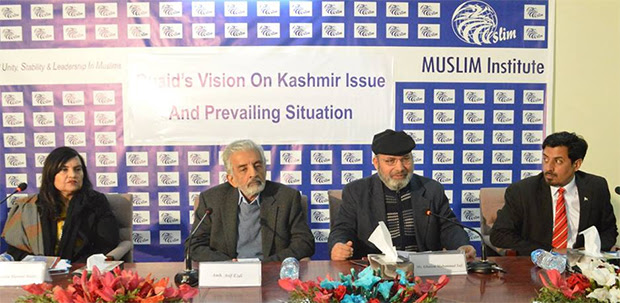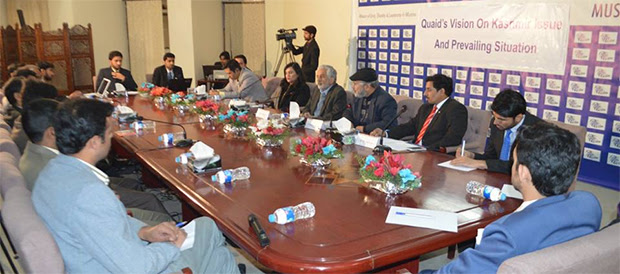September 20, 2010
The world’s longest-running international conflict – Kashmir – has burst once more into flames.
At least 69 Muslim Kashmiris protesting Indian rule have been shot down in the street by Indian paramilitary police in recent weeks. Scores more have been wounded as unrest spreads across the Himalayan mountain state. Kashmir’s capital, Srinagar, is under military curfew.
Indian and Pakistani military forces are on heightened alert as a result of the growing tensions.
A century ago, the great British geopolitician, Sir Halford Mackinder, called Kashmir one of the world’s primary strategic pivots – the nexus of continents, empires, and civilizations.
In my first book, `War at the Top of the World,’ which explores the Afghanistan and Kashmir conflicts, I described Kashmir as “the world’s most dangerous crisis.”
The danger still remains. India and Pakistan, now both nuclear-armed, have fought three major wars over Kashmir. They remain at scimitars drawn over the divided state. India keeps 500,000 troops and paramilitary police in Kashmir.
In 1999, Pakistani troops moved into the Indian-ruled Ladakh region of Kashmir, nearly provoking another war between the two old foes. Both sides put their nuclear forces in high alert. India and Pakistan have only a hair-trigger three minute alert window once they get warnings of enemy attack. This is almost launch on warning; the potential for an accidental war is enormous.
A nuclear war between India and Pakistan would kill and injure tens of millions – and produce clouds of radioactive dust that would pollute all of Asia’s major rivers and, eventually, the entire globe.
I have frequently been under fire on the tense Pakistani-Indian cease fire line, known as the Line of Control, that divided Kashmir into Indian and Pakistani-ruled portions. Border clashes between Indian and Pakistani troops have frequently threatened to escalate into a wider conflict in the south on the broad plains of Punjab.
Kashmir, some 92,000 sq miles (239,000 sq km), is roughly the size of Great Britain. It has 11 million people, which makes it larger than half the world’s nations. Eight million Kashmiris live in the Indian-ruled portion; 3 million in the Pakistani part. Another million people of Kashmiri origin live in Pakistan’s Gilgit-Baltistan region, which is part of historic Kashmir.
Like so many of our world’s problems, the Kashmir conflict harks back to the British Empire. In 1947, Imperial Britain divided the Indian subcontinent into India and the Muslim majority state of Pakistan. Millions of Hindus and Muslims died in the ensuing carnage of partition.
Kashmir was an independent princely state ruled by a Hindu maharajah. Seventy-seven percent of Kashmiris were Muslim; 20% Hindu; and the rest Sikhs and Buddhists. The Hindu prince wanted to join India, but most of his people wanted union with neighboring Pakistan.
Violence erupted. Pakistan and India went to war over Kashmir. By the time the UN imposed a cease-fire, India held two-thirds, including the Vale of Kashmir, and Pakistan one third of the beautiful mountain state. They have sparred and warred over Kashmir ever since.
Further complicating matters, during the 1950’s, China quietly occupied and annexed Kashmir’s 15,000 ft Aksai Chin region in order to build a military road linking its westernmost Xinjang province (the scene of the recent uprising by Muslim Uighurs) with Tibet.
China also claims the Indian-held Ladakh region of Kashmir as part of Chinese-ruled Tibet. Ladakh is also called “Little Tibet.”
Anti-Indian sentiment in Kashmir simmered until 1989 when full-scale rebellion or intifada by Kashmiri Muslims erupted. India battled for a decade to crush the uprising, often using tactics that Indian human rights groups and foreign rights groups condemned as brutal and violations of human rights. Massacres, torture, collective reprisals and gang rape became common. So did massacres of Hindus and Sikhs by Muslim insurgents.
Pakistan’s intelligence service, ISI, armed and aided Kashmiri mujahidin, and helped sustain the popular uprising, until 9/11 2001 when Washington forced Pakistan to mostly end its intervention in Kashmir.
After 40,000-80,000 deaths, most of them Muslims, India seemed in recent years to have extinguished the uprising. But now, it has sprung once more to life, sharpening Indian-Pakistani tensions and drawing China into the dispute.
In 1948, the UN Security Council ordered a plebiscite to determine if Kashmiris wanted to remain in India, or join Pakistan. India has adamantly rejected the UN resolution and insists Kashmir is a purely internal matter.
The uprising, asserts Delhi, is all due to “cross-border terrorism” from Pakistan. So the conflict has festered for 62 years – even longer than the dispute over Palestine. Further complicating matters, numerous Kashmiri Muslims are calling for an independent state and demand Pakistan return Gilgit-Baltistan (“Northern Territories” to Pakistan).
Now, the Kashmir conflict can no longer be avoided. It has become part of the arc of crisis that includes Afghanistan, Pakistan and India’s violence-plagued western regions. Recent murderous attacks on India by Pakistan-based extremists were motivated by the ongoing conflict in Kashmir.
Equally worrying, there are reports that Chinese troops have entered northern Pakistan, adjacent to Kashmir. Beijing says these troops are helping repair the fabled Karakoram Highway (KKH), the only land link between close allies China and Pakistan. I have been over this 15,000 ft-high marvel carved from the ever-shifting mountains, one of my most hair-raising, thrilling adventures.
China is just finishing a deepwater port and naval base on Pakistan’s western Arabian Sea coast at Gwadar. I first wrote about this highly strategic port in a 1980’s New York Times op-ed piece, predicting it would become a major strategic issue.
Gwadar will afford China’s expanding navy a supply base and safe haven that gives onto the Indian Ocean and Gulf. Today, 55% of China’s oil comes from the Gulf; in a few years, some 80%. Gwadar lies right on China’s vital oil artery.
New roads, a railroad, and a gas pipeline are building northeast from Gwadar to the KKH, then into China. India is increasingly alarmed by this strategic development, which it claims is part of China’s growing “encirclement” of India. Furthermore, India also warns that Chinese troops along the KKH are ready to intervene in Kashmir in the event of a new conflict between Delhi and Islamabad.
In spite of great reluctance, Washington is slowly being drawn into the Kashmir dispute. The US wants India and Pakistan to resolve their bitter Kashmir conflict so that the bulk of Pakistan’s army, now deployed against an attack from India, can be sent into action in Afghanistan and the Northwest Frontier (recently miserably renamed, Pakhtunkhwa). But this cannot happen so long as Kashmir burns, so Washington is tip-toeing into a new diplomatic mess in the Himalayas.
What a tangled web we weave…..Afghanistan can’t now be solved without stabilizing Pakistan. But Pakistan will remain unstable and angry so long as the Kashmir conflict continues. But the Bush administration allied the US with India, infuriating old ally Pakistan which sees India and now the US as its principal enemies.
Enter the dragon, China, Pakistan’s closet current ally, expanding its power westward towards the oil-rich Gulf. Sir Halford Mackinder, it appears, was quite right about Kashmir, which lies at the nexus of these great events.
Copyright Eric S, Margolis 2010
This post is in: Asia

















